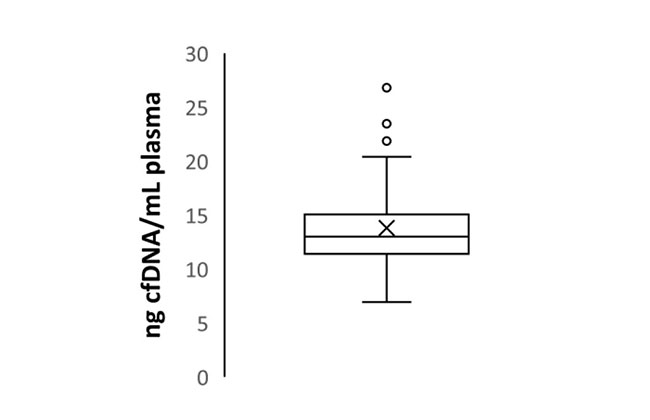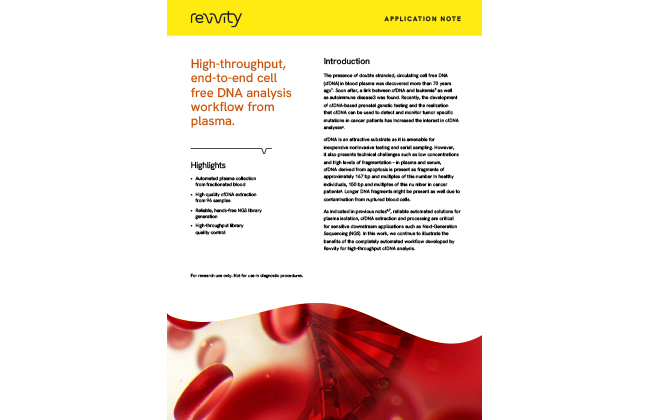cfDNA workflow from plasma
High-throughput, end-to-end cell free DNA analysis workflow from plasma
The presence of double stranded, circulating cell free DNA (cfDNA) in blood plasma was discovered more than 70 years ago. cfDNA is an attractive substrate as it is amenable for inexpensive noninvasive testing and serial sampling. However, it also presents technical challenges such as low concentrations and high levels of fragmentation – in plasma and serum, cfDNA derived from apoptosis is present as fragments of approximately 167 bp and multiples of this number in healthy individuals, 150 bp and multiples of this number in cancer patients. Longer DNA fragments might be present as well due to contamination from ruptured blood cells.
Reliable automated solutions for plasma isolation, cfDNA extraction and processing are critical for sensitive downstream applications such as next-generation sequencing (NGS). In this work, we continue to illustrate the benefits of the completely automated workflow for high-throughput cfDNA analysis.

Highly reproducible cfDNA extractions on chemagic 360 instrument
1.5 mL of plasma from healthy donors was obtained with the JANUS® G3 Blood iQ™ Workstation and cfDNA was extracted in one automated run.
cfDNA Extraction
1.5 mL of plasma from each of the 96 donors (1 replicate/donor) was used as input on the chemagic 360 instrument equipped with a 96-rod head. cfDNA was purified using the chemagic cfDNA 1.5k Kit H96 (CMG-1396). A JANUS® G3 Primary Sample Reformatter was used to set up all plates for the chemagic 360 instrument.
For research use only. Not for use in diagnostic procedures.
